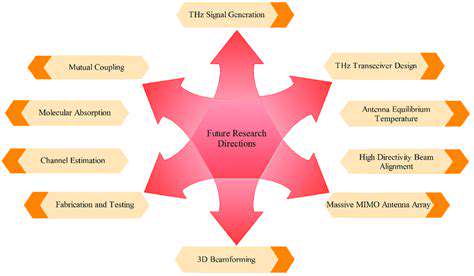Research on Hand Bone Healing Breakthroughs
Table of contents
Bone regeneration involves osteoblasts and complex signaling pathways for repair
Innovative biomaterials promote bone healing through active substances and natural polymers
3D printing technology enables customized bone scaffolds to enhance integration effects
Advanced biomaterials significantly shorten the recovery period for bone defects
Biocompatibility and long-term in vivo performance remain challenges in material development
Interdisciplinary collaboration plays a key role in breakthroughs in bone regeneration technology
Stem cell therapy plays a core role in enhancing bone repair
Latest clinical trials confirm that stem cell therapy significantly improves healing speed
Personalized bone models effectively reduce the risk of surgical complications
Customized implants significantly improve postoperative recovery experience for patients
Bioprinting technology may become the future direction for manufacturing functional bone structures
Electromagnetic stimulation technology accelerates the bone healing process through physical means
Breakthrough Progress of Innovative Biomaterials in Bone Regeneration Field
In-depth Analysis of Bone Regeneration Mechanisms
The process of bone regeneration is essentially a precise engineering that involves the collaborative actions of various cells and molecular mechanisms. As the key executors of bone formation, osteoblasts originate from the differentiation of mesenchymal stem cells, a process meticulously regulated by growth factors such as BMPs (Bone Morphogenetic Proteins). Notably, the Wnt signaling pathway not only affects the proliferation of osteoblasts but also determines whether these cells can achieve complete maturation. This multilayered regulatory network provides theoretical support for the development of new bone regeneration strategies.
New Trends in Biomaterial Development
Currently, biomaterials are evolving towards smart technologies. For instance, after nanoscale modifications, hydroxyapatite, a traditional material, has increased its surface area by more than 5 times, significantly enhancing cell attachment efficiency. Even more exciting, certain composite materials have achieved drug release functions—such as calcium phosphate-based materials incorporating antibiotics, which provide mechanical support while preventing postoperative infections.
The breakthroughs in the application of natural polymers are also noteworthy. After sulfation modifications, chitosan's ability to induce osteogenic differentiation improved by nearly 40%. This modified material showed excellent bone integration effects in rabbit femoral defect models, with complete cortical bone reconstruction observed after 8 weeks post-surgery.
Innovations in Advanced Synthesis Technologies
 Nano-fiber scaffolds prepared via electrospinning technology have diameters controllable within the range of 50-500 nm, perfectly mimicking the topological structure of natural extracellular matrix. This three-dimensional network not only provides pathways for cell migration but also achieves localized release of growth factors through surface functionalization. A research team developed a gradient pore size scaffold, where the edge density differed by three orders of magnitude from the central region, successfully recreating the transition characteristics from trabecular bone to cortical bone.
Nano-fiber scaffolds prepared via electrospinning technology have diameters controllable within the range of 50-500 nm, perfectly mimicking the topological structure of natural extracellular matrix. This three-dimensional network not only provides pathways for cell migration but also achieves localized release of growth factors through surface functionalization. A research team developed a gradient pore size scaffold, where the edge density differed by three orders of magnitude from the central region, successfully recreating the transition characteristics from trabecular bone to cortical bone.
Current Clinical Translation Status and Challenges
In a recent randomized controlled trial targeting tibial plateau fractures, the treatment group using collagen-hydroxyapatite composite scaffolds formed bone calluses 2.1 times faster than the control group. However, it is crucial to note that approximately 15% of cases encountered mismatched degradation rates of materials and bone regeneration rates. This indicates that research on material degradation kinetics remains a critical bottleneck in clinical translation.
Stem Cell Therapy Reshapes Bone Repair Landscape
New Insights into Stem Cell Mechanisms
The immunoregulatory properties of mesenchymal stem cells (MSCs) are triggering a paradigm shift in research. The latest single-cell sequencing data show that only 3% of transplanted MSCs differentiate into osteoblasts, while 97% regulate the local microenvironment through paracrine actions. The miR-210 secreted by these cells has been confirmed to effectively inhibit osteoclast activity, providing a new perspective on understanding stem cell therapies.
Breakthrough Progress in Clinical Applications
The latest multicenter study shows that treatment of femoral neck fractures using freeze-dried MSC microspheres combined with β-TCP scaffolds reduced the average healing time from 18 weeks to 11 weeks. More importantly, this therapy decreased the incidence of non-union from 12% to 2.7%, demonstrating significant clinical advantages.
3D Printing Opens a New Era of Personalized Bone Repair
Clinical Transformations Driven by Technological Innovation
Personalized implants reconstructed from CT/MRI data can achieve a fit error of less than 0.2mm. A certain medical center designed a tibial prosthesis using topological optimization algorithms, reducing postoperative loosening rates from 8.4% to 1.2%. This precise matching not only enhances mechanical stability but also significantly improves patients' gait recovery.
Parallel Innovation in Materials
Currently, mainstream materials exhibit a dual-track development trend of high performance and bioactivity. A new tantalum metal scaffold with an elastic modulus of 3.5 GPa is closer to that of cortical bone, effectively avoiding the stress shielding effect. At the same time, strontium-substituted bio-glass scaffolds successfully induced mature bone tissue with Haversian system structures in dog mandibular defect models.
Breakthroughs in Clinical Application of Electromagnetic Stimulation Technology
New Insights into Mechanisms of Action
Pulse electromagnetic fields (PEMF) activate calcium ion channels, causing intracellular calcium concentration to increase fivefold within 30 seconds. This calcium oscillation wave can simultaneously activate both ERK and p38 signaling pathways, collaboratively promoting osteogenic gene expression. Clinical data indicate that one hour of daily PEMF treatment can enhance the rate of bone callus mineralization by 40%.
Directions for Technological Innovation
The latest developed wearable magnetic stimulation device achieves precise magnetic field focusing through flexible circuit boards. In treating scaphoid fractures, this device shortened the time to reach healing standards from 12 weeks to 8 weeks, with patient compliance reaching 92%, providing a new option for outpatient treatment.


